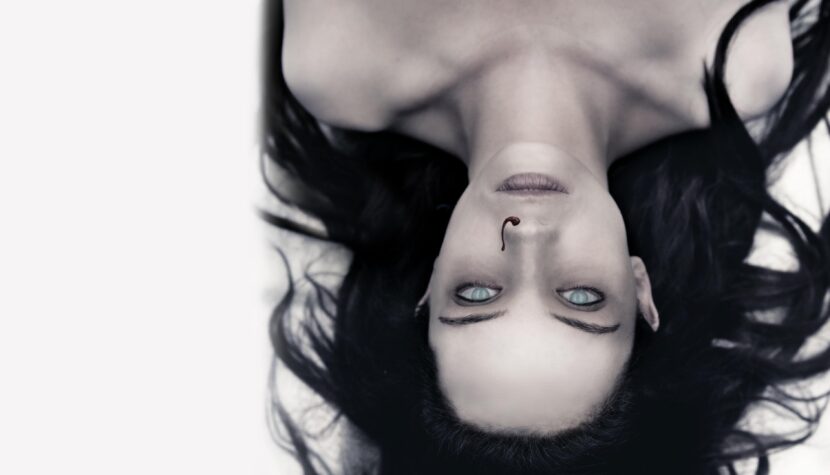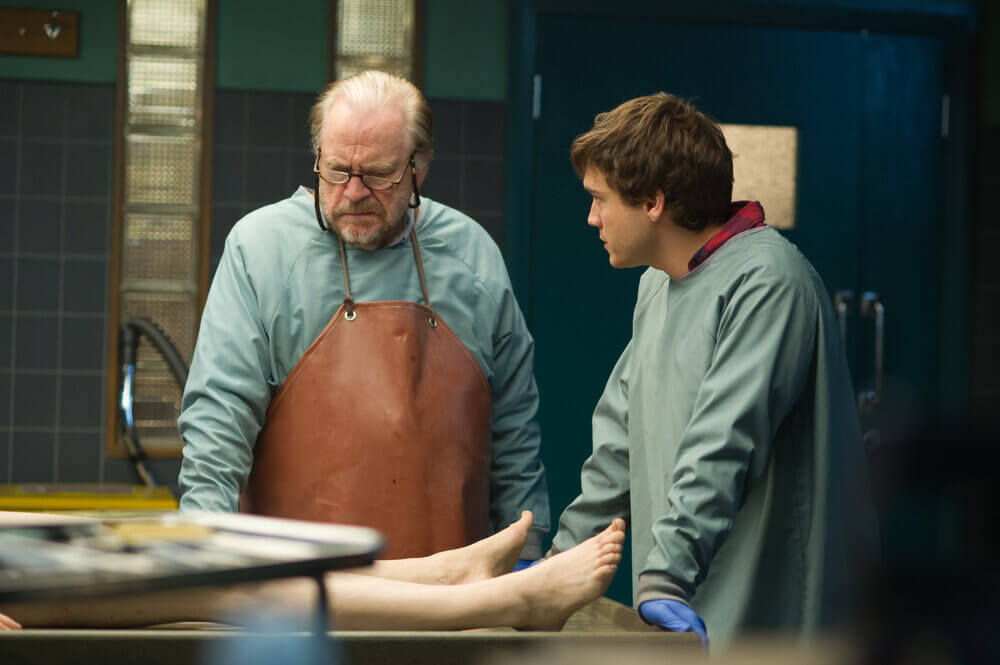THE AUTOPSY OF JANE DOE. Intimate, effective horror

Here’s a title that says it all.
Jane Doe is, of course, our N.N., the person without identity, in this case, the body discovered in the basement of a house where a massacre took place. While it is known who the other victims are and how they died, the naked body of the unknown young woman arouses justified interest from the police. The local coroner is tasked with determining the cause of her death, and he forms a cohesive duo with his son, a medical technician. However, when they start dissecting Jane Doe, they uncover increasingly disturbing details.
André Øvredal’s film, by its title, somewhat reveals its genre affiliation. From the outset, we know we’re dealing with horror because no film called The Autopsy of Jane Doe could be anything else. The characters try to uncover the unknown in a very objective and professional manner using a scalpel. The father (always reliable Brian Cox) is not interested in the motives behind the crime or any other elements unrelated to the work he’s doing – his task is to determine why the deceased is dead and he has no intention of going beyond that. The son (the good, lately unseen Emile Hirsch) asks more questions about the circumstances of death, assuming they may be helpful in determining what really happened to the deceased. In other words, one focuses all attention on “what?”, while the other tries to supplement this knowledge with “why?”. Øvredal’s film operates on a similar principle, giving voice to the older of the men in the first half, and from the moment events take a very strange and life-threatening turn, the initiative is taken over by the logic of the younger one.

Extremely effective, this horror relies on something that is usually a last resort for creators of this genre. Stephen King once made a distinction between three types of emotions to evoke in the horror audience, ranking fear and difficult-to-define unease as the noblest, followed by short-lived terror, achieved through common means, and finally disgust. The Autopsy of Jane Doe starts with the latter – we see very detailed stages of the autopsy, the undoubtedly beautiful girl’s body being opened before our eyes, and then, without sentiment, emptied of organs. Interestingly, from a certain point, these macabre yet realistic images stop repelling the viewer and begin to evoke that best kind of horror experience according to King.
In his earlier film, Trollhunter, Øvredal also laid the groundwork for entering the world of fantasy with realism, using quite different methods (found footage aesthetics), but ultimately saying the same thing – our reality has its secrets and discovering them can cost us a lot. The whole fun this time is about trying to explain what all the puzzle pieces might mean, how they fit together, and whether the final picture will bring the characters salvation. Without going into details, I’ll say that we get answers to these questions and, unfortunately, they bring down the most desired of all fears described by King, offering us only fear through a handful of simple jump scares and a predictable ending. That’s how it is when we come to know the unknown.
However, before that, we genuinely watch one of the best horror ideas of recent years, expertly conducted and executed. The workplace of the men is in the basement of an old house, probably remembering the times of both world wars, with the radio speakers playing a song from the fifties and some diabolical verses, and small plot elements, such as cracked vials with blood oozing from the fridge, a dark silhouette visible only in the mirror, and the presentation of the bodies of a younger girl in the fridge belonging to one of the men, demonstrate that the Norwegian director not only learned a lesson from classical horror cinema but also managed to elegantly combine everything. Although the action takes place in modern times, we don’t feel it – the camera recording the autopsy is practically the only element suggesting our times (the cell phone doesn’t work), which introduces a pleasant retro atmosphere, somewhat reminiscent of The Taste of Cherry. The whole house is engulfed in darkness, except for the room where the body of the titular heroine is being examined, suggesting that if the father and son want to find a kind of enlightenment and salvation, all their hope lies in completing the autopsy.

I like Øvredal’s consistency and choice of means with which he weaves his small but special horror film. The director surrounds the initial situation with elements that are difficult to relate to the body lying on the table, but which maintain uncertainty, and consequently fear, are constantly present.
I won’t reveal the revelations the two feral coroners find in the deceased’s body, as the whole film is built on this mystery. I will only say that the ending, though disappointing, does not put the proverbial dot on the i – the conclusions drawn do not necessarily coincide with the truth. Ultimately, what’s best about The Autopsy of Jane Doe comes down to the thinking of the character played by Cox, who focuses on thorough and meticulous examinations, leaving all the rest to those wiser than himself. If only the film’s creators were just as fundamental.
PS. This is not a film that demands the largest screen, and I even think it could spoil the effect the director has worked out. This intimate horror deserves equally intimate conditions.

